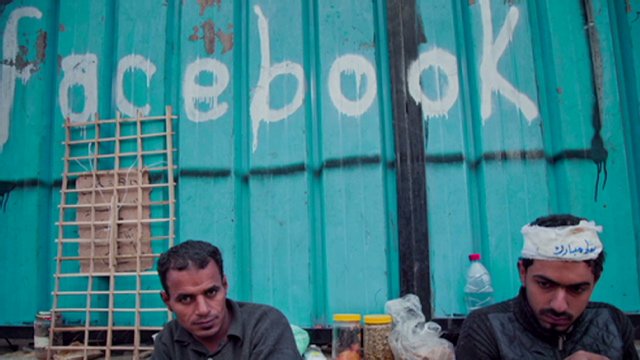
There’s no doubt that the explosion of social media, mobile technology and online-organising capabilities have dramatically altered the battle terrain of class struggles today in ways good, bad and ugly.
From the Arab Spring to New York’s ongoing Occupy Wall Street protests, social media and online organising are clearly transforming the way that small, isolated campaigns develop into mass movements in the streets. But how do we separate the genuinely useful aspects of social media from the “data smog” of media hype?
We can start by surveying the role of new technology in some recent political upheavals and the response of governments, internet service providers and media outlets to it.
Long before Facebook and Twitter, the humble mobile phone proved an exceedingly useful tool in the hands of activists through the 2000s, particularly in poor countries where mobile use hugely outstripped internet access. For example, only 7% of Indians (81 million) regularly use the internet, yet 507 million own mobile phones.
In sub-Saharan Africa in 2004, for every regular internet user there were eight mobile phone users.
During the World Trade Organisation meeting in Seattle in 1999, demonstrators used mobile phones to coordinate and mobilise other activists. This enabled them to quickly change tactics, evade attacking police, liaise with lawyers when necessary and speak to the media from the protest itself.
More recently, mobile phones captured footage of brutal beatings and shootings of demonstrators in north Africa and the Middle East.
There has been no shortage of press hype about the supposed catalytic role of social media in the Arab Spring.
“The digitally-fueled revolutions in Tunisia, Egypt, Bahrain, Syria, Libya, Yemen, and more”, claimed CNN’s Amber Lyon, “have leveraged the technology of the Internet to call out injustices, demand democratic change, organize protests, and share news about how to evade authorities desperately trying to contain the spread of revolution.”
United Arab Emirates-based journalist Sultan Al Qassemi provides a more balanced view. He believes: “social media has certainly played a part in the Arab Spring Revolutions but its impact is often exaggerated...
“Egypt was disconnected from the outside world for days and yet the movement never stopped.”
Al Qassemi explains that social media and blogs were most effective in the Arab Spring when they reported the news that the corporate media ignored: “Where social media had a major impact was conveying the news to the outside world, bloggers and Twitter users were able to transmit news bites that would otherwise never make it to mainstream news media.”
Writing for Stratfor.com, a site that reports frankly on global developments for the benefit of the US capitalist class, Marko Papic and Sean Noonan point out: “Social media alone, however, do not instigate revolutions. They are no more responsible for the recent unrest in Tunisia and Egypt than cassette-tape recordings of Ayatollah Ruholla Khomeini speeches were responsible for the 1979 revolution in Iran.
“Social media are tools that allow revolutionary groups to lower the costs of participation, organization, recruitment and training. But like any tool, social media have inherent weaknesses and strengths, and their effectiveness depends on how effectively leaders use them and how accessible they are to people who know how to use them.”
The importance and impact of social media on each of the Arab rebellions has been defined by local circumstances ― not least by how well organised the groups using social media were.
Some commentators go as far as to claim that activism is being reduced to inconsequential online petitions and Facebook “liking”. Adbusters' Micah White, for example, argues that left activism is being ruined by what he calls “clicktivism”.
“A battle is raging,” White says, “for the soul of activism”.
White says: “It is a struggle between digital activists, who have adopted the logic of the marketplace, and those organisers who vehemently oppose the marketisation of social change.”
Yet ironically, Adbusters, along with the other protesters, has very successfully used social media to publicise the ongoing Occupy Wall Street protests. Hash tags #OccupyWallStreet ranked 55th on Twitter for the week and #TakeWallStreet ranked 35th at one point.
The idea of Occupy Wall Street began with a Facebook appeal from Adbusters to its supporters that quickly spawned an open-source organising site. At the time of writing the #OccupyWallStreet Facebook page lists 16,827 people as attending and 8924 as maybe attending.
Social media and mobile technology have irrevocably changed the way that progressive activists get the word out.
They are no substitute for mass action in the streets. But, used effectively, they are vital tools of progressive activists worldwide.